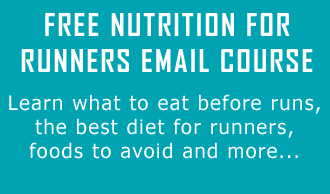RunnersWorld.com just posted an in-depth interview with current Olympic Marathon hopeful Fasil Bizuneh. You can read the full interview here.
The interviewer asked Fasil two important questions that provide insight from an elite runner into a lot of the same principles of marathon training I’ve been covering this summer. The following are two questions from the full interview and Fasil’s answers:
Did you find yourself working harder because of them (Jeff’s note: Fasil’s new teammates – 2:10 marathoner Brett Goucher and a former teammate of mine, 2:11 marathoner Nick Arciniaga)? Were they perhaps a step ahead of you in the beginning?
FB: I wouldn’t say that. Actually, with Scott (Jeff’s note – Fasil’s old coach and one of my old coaches as well), one of the problems was that I was doing everything too hard. In reality, it’s kind of like Greg says. The main thing is we don’t need to go to the well for every workout. So it’s actually a little bit more relaxed now.
At Buffalo Park, where there’s a two-mile loop in Flagstaff that’s marked every quarter, we’re running ten miles at between 5:15 and 5:25 (per mile) pace. Compare that with the past, when I’d run seven miles there in under 5:00 pace. Greg said the thing I was missing was that aerobic threshold, which is not maximal running – but the marathon is all aerobic threshold. My engine was just burning too fast. One of the main problems with all my past marathons was I’d just run out of energy, from the type of training I was doing or the intensity. I was getting to the starting line and I was already in the hole. I wasn’t prepared for the rate at which the fuel should have been burning.
I know you had high hopes at New York City last fall. Did you run into trouble early or was it just in the last half of the race (Bizuneh ended up running 2:30:28)?
FB: No, early. I actually felt terrible at the nine-mile mark. I was running with (Peter) Gilmore and Jason Lehmkuhle up until that point. It was terrible. I didn’t get to the line with a full tank and I kind of question the kind of work that I was doing, if it was what I needed to be doing.
This time, we did three key workouts that Brett (Gotcher) did before Houston (in January) that are part of Greg’s marathon training plan. There’s this road, Lake Mary, and we just go one way on it. We did a 15-miler there, and then two weeks ago we did an 18-miler. And this coming Saturday, we have another 15-miler. Those are really going to help prepare us for the kind of feeling that we’re going to have in the (Chicago) race. The first one I did by myself, because Nick and James were going to do the USA 20K and I was doing the USA 10 mile, which was a week ahead. And I kind of struggled a little bit, and Greg said that was okay because we’re not trying to be in our best shape with eight weeks to go. He said “you can expect when you do the 18, you’re going to be significantly faster.” And then the second 15 will be faster, and then the marathon is going to be the best think; it’s like a ramp going up. From the 15-miler that I did by myself to the 18 with Nick and James, I was three minutes faster for the last 15 miles of the 18-miler.
Fasil’s comments about marathon training are right on. I see too many marathon training plans that have a very steady diet of v02 max workouts (400, 800 and mile repeats at 5k pace with lots of rest) and a mix of shorter tempo runs, but lack any development of the aerobic threshold. Lowering your aerobic threshold (loosely defined as the fastest you can run while still being aerobic) is the best way to get faster at the marathon. Mainly, you burn energy very efficiently when running aerobically. So, the faster you can run while staying aerobic, the faster you can run a marathon. That’s not to say you don’t need any speed work in your marathon training. Rather, you need to balance the speed training so it does not compromise important aerobic threshold development. I prefer to “hide” the speed training in the marathon training program with strides, short hill sprints, and surges during the long run.
The next question is also an important thing to remember with marathon training – your training is like building a ramp. Don’t expect your first real long run to go that great. Every marathoner does that first 16or 18-miler and thinks “there is no way I am finishing 26 miles”. Not only are you fatigued from your previous training days, but you’re only half way up the ramp. Add in the fact that you probably did the run alone, without the aid of 10,000 other runners and people lining the course.
Hopefully, you enjoyed some insight from an elite runner on marathon training and my analysis on his thoughts and answers. If you enjoy (or hate) this sort of post, leave a comment and I will be sure to include more of them in the future.







